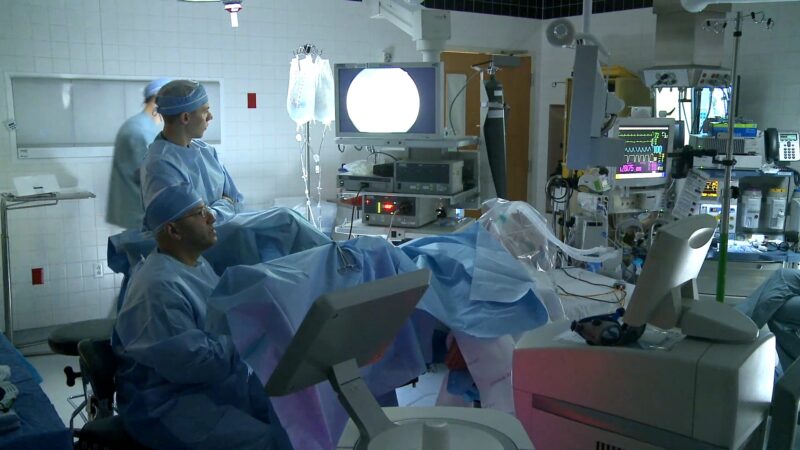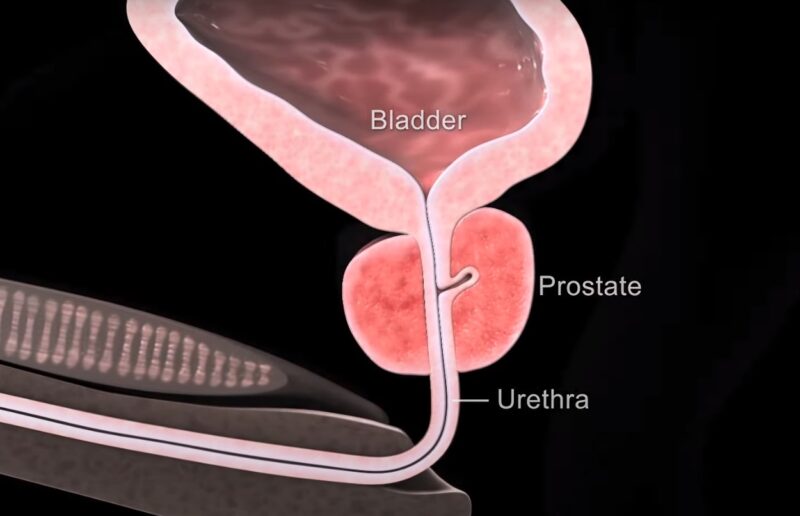Benign Prostatic Hyperplasia, commonly referred to as BPH, is a prevalent medical condition often associated with the aging process in men. Characterized by the non-cancerous enlargement of the prostate gland, BPH can result in various urinary symptoms that range from mild inconveniences to significant discomfort.
While many might have heard the term or know someone affected by it, understanding the intricacies of BPH is essential for early detection, effective management, and improved quality of life.
The Basics of BPH
BPH is a medical condition characterized by the enlargement of the prostate gland. It is important to note that this enlargement is non-malignant, meaning it is not cancerous. Despite this, the swelling can still lead to significant discomfort and health complications if left untreated.
- As men age, hormone levels undergo changes.
- These changes can trigger the growth of prostate cells.
- The accumulation of these cells causes the prostate gland to enlarge.
- While this enlargement is a natural process, it can lead to complications.
- The primary concern arises when the growing prostate presses against the urethra.
- This pressure often results in urinary symptoms.
- Early detection of these symptoms is vital.
A thorough understanding of the signs is essential for effective management and treatment.
Symptoms and Complications

For many men, the first sign that they might be experiencing Benign Prostatic Hyperplasia is a change in their urinary habits. These symptoms, while not life-threatening, can be bothersome and can greatly affect the quality of life.
- Common Urinary Symptoms:
- Frequent urination, especially at night.
- Difficulty in starting and maintaining a steady stream of urine.
- A sensation that the bladder isn’t fully emptied after urinating.
- Other Symptoms to Note:
- Occurrence of urinary tract infections.
- Presence of blood in the urine.
- It’s crucial to see a doctor if these symptoms manifest.
- Potential Complications:
- Formation of bladder stones.
- Increased risk of urinary tract infections.
- Potential for kidney damage in severe, untreated cases.
Though rare, being aware of these complications is vital, especially if symptoms worsen or become significantly bothersome.
Treatment Options for BPH
Treating BPH involves a range of options from lifestyle changes to medication, and in some cases, surgery. The chosen treatment often depends on the severity of the symptoms and the potential risks or side effects associated with each method.
One of the initial approaches to managing Benign Prostatic Hyperplasia symptoms is through lifestyle changes. This might include reducing liquid intake before bedtime, limiting alcohol and caffeine, regular exercise, and practicing double voiding (urinating, then waiting a few moments, and trying again).
For many men, these changes can alleviate some of the discomfort associated with BPH.
Prevention and Risk Factors

Understanding what might contribute to the onset of BPH can be a key component in prevention and management. Though BPH is commonly associated with aging, there are other risk factors and prevention methods to consider. Age is undeniably the most significant risk factor for Benign Prostatic Hyperplasia.
The condition is rare in men under 40 but becomes more common as men reach their 50s and 60s. Family history can also play a role. If close male relatives, such as fathers or brothers, have had BPH, the risk might increase. Other factors include obesity, heart and circulatory diseases, and type 2 diabetes.
While there is no surefire way to prevent BPH, certain lifestyle choices can reduce the risk or alleviate symptoms. Regular exercise, maintaining a healthy weight, and following a balanced diet can all play a role in prevention. Regular check-ups, especially as one gets older, can help in early detection and management.
Living with Benign Prostatic Hyperplasia
For many men, BPH becomes a part of their daily life. With proper management and awareness, it’s entirely possible to lead a normal, active life despite the condition. Regular monitoring of symptoms is crucial.
Keeping a symptom diary can help track the frequency and severity of symptoms, which can be useful when consulting with a healthcare professional. This can also help in understanding which activities or foods exacerbate the symptoms and which ones help alleviate them.
Support is also essential. This might come in the form of support groups, where men with BPH can share their experiences, or through close friends and family. Being open about the condition and seeking advice or assistance when needed can make managing BPH much more comfortable.
Advancements in Research
As with many medical conditions, ongoing research into BPH is crucial for improving treatment methods and overall understanding of the condition. Over the years, advancements in medical technology and research have offered new insights and options for those affected by Benign Prostatic Hyperplasia.
A recent study conducted at Stanford shows the genetic and molecular mechanisms behind BPH. By pinpointing the genetic markers and cellular pathways involved in prostate enlargement, researchers aim to develop targeted therapies that might offer more effective and fewer side effects than current treatments.
Another exciting area of research focuses on minimally invasive treatments. Traditionally, surgical interventions for severe BPH cases could be quite invasive. With the advent of new technologies and techniques, less invasive options are being explored.
These might include laser therapies, ultrasound treatments, or even innovative implant devices that help to open the urethra.
Dietary and Holistic Approaches

Beyond conventional medical treatments, there’s growing interest in how dietary and holistic approaches can impact symptoms. These methods aim to manage the condition by leveraging natural remedies and lifestyle changes.
| Foods/Supplements | Potential Benefits |
|---|---|
| Saw Palmetto | Used in traditional medicine to treat urinary symptoms |
| Foods rich in beta-sitosterol | Researching potential benefits in reducing prostate size and alleviating symptoms |
| Method | Potential Benefits |
|---|---|
| Acupuncture | Being explored for managing BPH symptoms |
| Yoga | Can aid in stress reduction |
| Meditation | Provides the same benefits as yoga |
The Psychological Impact
Dealing with BPH is not solely a physical challenge. The condition can also lead to psychological effects due to changes in one’s daily life and the constant management of symptoms. Recognizing and addressing these emotional aspects is vital for a comprehensive approach to handling BPH.
Men dealing with frequent urination, especially at night, may experience disruptions in sleep patterns. Continuous sleep disruptions can lead to fatigue, mood swings, and even depression over time. The anxiety of finding a restroom while outside or the embarrassment of potential urinary leaks can also lead to increased stress and social withdrawal.
Building a support system is essential. Open communication with partners, family members, and close friends can alleviate feelings of isolation. Seeking professional counseling or joining support groups can provide coping strategies and a platform to share experiences.
How Much Does Treatment Cost?

BPH, like many chronic conditions, comes with economic considerations. From diagnostic tests, medications, surgeries, to regular doctor’s visits, the financial toll can be significant. Direct costs include those associated with medical procedures, doctor visits, medications, and hospital stays.
Indirect costs, on the other hand, might come in the form of lost workdays, decreased productivity, or the need for caregiving in severe cases. It’s essential for patients to be aware of potential financial assistance programs, insurance coverage options, and generic versions of medications.
Engaging in discussions with healthcare providers about cost-effective treatment options can also be beneficial.
FAQs
How common is Benign Prostatic Hyperplasia (BPH) among men?
BPH is quite common, especially in older men. By the age of 60, more than half of men have some degree of BPH.
Is BPH the same as an enlarged prostate?
Yes, BPH is often referred to as an enlarged prostate. Having an enlarged prostate doesn’t necessarily mean you have BPH; it’s the associated symptoms that determine the diagnosis.
Are there side effects to BPH medications?
Yes, like all medications, these can have side effects. Common ones may include dizziness, fatigue, or sexual dysfunction. Always discuss potential side effects with your healthcare provider.
Does BPH increase the risk of prostate cancer?
No, Benign Prostatic Hyperplasia is benign and doesn’t lead to prostate cancer. Because some symptoms overlap, it’s important to get regular check-ups.
How does BPH impact daily life?
BPH can affect daily activities due to frequent urination, especially at night. It can also lead to discomfort, urgency, and in some cases, social anxiety about restroom accessibility.
Wrapping Up
If lifestyle changes aren’t sufficient, medications can be prescribed. These drugs work in different ways – some aim to relax the muscles in the prostate, making it easier to urinate, while others work by shrinking the prostate gland itself.
In cases where medication is ineffective or the condition is severe, surgical options might be explored. This could involve procedures that remove or reduce the size of the prostate gland. As with any medical condition, it’s essential to consult with a healthcare professional to determine the best course of action.
At health2con.com you, you shall find numerous useful insights in medical-related topics.
